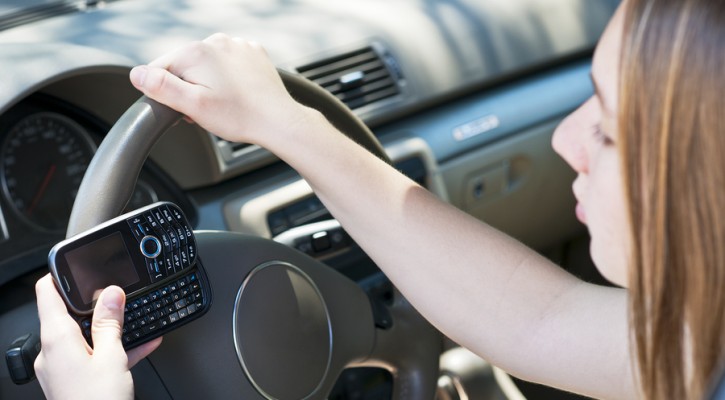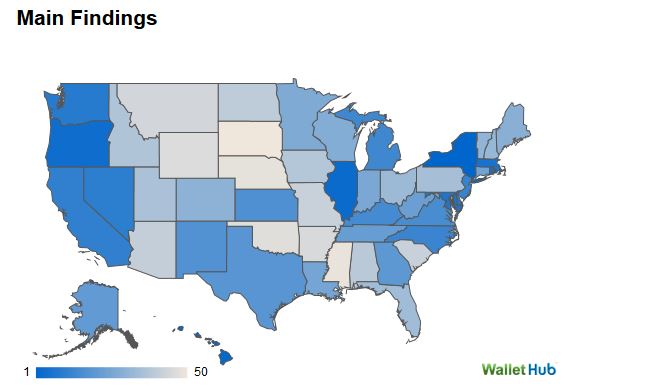Category Archive: Parents

YouTube Videos Fail To Show Whole Story
February 25, 2015
YouTube videos of alcohol use by young people fail to show the whole story and can be a dangerous influence on teens. This conclusion is the result of a study conducted by the Center for Research on Media, Technology, and Health, at the University of Pittsburgh and published in the journal Alcoholism Clinical and Experimental Research.
The study’s authors looked at 70 of the most popular YouTube videos regarding alcohol intoxication. Combined, the videos had a total of more than 333.2 million views and the number of “like” designations totaled more than 99 percent compared to less than one percent of “dislikes.” Twenty-four percent of the videos involved the use of motor vehicles.
The problem with the videos, according to the researchers, is that the videos portray alcohol use in a funny or glamorous way without showing any of the negative aspects of alcohol abuse. Negative aspects of alcohol use include, but aren’t limited to; vomiting, sexual assault, car crashes, arrest, and death by alcohol poisoning.
For parents, these videos open up an opportunity to start a dialogue with teens about those negative aspects of alcohol abuse that aren’t portrayed in the YouTube videos.
Read more: Hammered And Heedless: Do Dangerous Drinking Videos Harm Teens?

Passengers Affect Teen Safe Driving Attitude
February 24, 2015
Teen passengers can have a big affect on a teen driver’s safe driving attitude according to a recent study published in the journal Health Psychology. According to the research, a teen passenger’s personal attitudes about risky driving habits can influence the teen driver to engage in risky driving behaviors.
It has long been known that, the more teen passengers there are in a teen driver’s car, the greater the risk of a crash. According to a 2012 study by the AAA Foundation For Traffic Safety, a teen driver’s risk of involvement in a deadly crash increases by 44 percent with one teen passenger in the vehicle. The risk doubles with two teen passengers and quadruples with three or more passengers.
According to the new study, a teen driver is more willing to engage in risky driving behaviors if he (this is especially true for male teens) perceives that his passengers approve of those risky behaviors. The passengers don’t have to specifically tell the driver to take risks but can give subtle clues of their approval.
To find out why this was so, the researchers studied 66 teen drivers in a simulated driving situation. The teens were told that they were being paired up for the simulation with another randomly selected teen (actually a young looking research assistant). The research assistants played two different rolls. Upon first meeting one assistant would arrive late and say “Sorry I was a little late getting here. Normally I drive way faster, but I hit like every red light.” The other research assistant would tell his teen partner “Sorry I was a little late getting here. I tend to drive slowly, plus I hit every yellow light.”
The teen was then asked if his partner could try out the simulator first “just for fun”. The research assistant who said he tended to drive fast would then “drive” the simulator without using a seat belt and in an aggressive manner. The assistant who said he typically drove slowly obeyed the traffic rules and drove as safely as he could.
The research subjects were then given the opportunity to drive the simulated course alone and then with their partner as a passenger. Their driving behavior was measured by tracking whether or not the subject failed to stop for red lights and how much time was spent in the intersection after the light turned red.
All the research subjects tended to take more risks when they had a passenger with them but those with the aggressive driving partner took far more risks that those with the risk-averse partner. Even though they had just met their passenger and the passenger didn’t pressure the teen drivers in any way, the teen drivers tended to adopt the risky or safe driving attitude of their passengers.
According to research by the Children’s Hospital of Philadelphia, only 10 percent of teens correctly view passengers as potentially hazardous. Teen peer pressure can be overt or it can be subtle. Teens who ride as passengers in another teen’s vehicle should be taught that it’s OK to tell the driver to stop his or her risky behavior. Both teen drivers and teen passengers need to be taught that the actions of passengers can be distracting to the teen driver and taught to modify their behavior accordingly.

Florida Driving Test Changed
February 11, 2015
The written portion of the Florida driving test was changed last year and, apparently, a lot of people are having a hard time passing the newer version.
According to the Florida Department of Highways and Motor Vehicles, the old test hadn’t been updated in 20 years and many of the questions could be found online so it was decided that the time had come to update the test.
According to a spokesman for the Duval County, FL Tax Collector’s office, the previous test had a failure rate of about 40 percent. Since the new test was introduced, the failure rate statewide has increased to almost 70 percent.
The previous test consisted of a total of 40 questions with 20 questions on road rules and 20 on road signs. The new test consists of 50 questions with 45 on road rules and 5 on road signs and it also also requires a passing rate of 80% compared to the old passing rate of 75 percent.
There was no time limit on the old version of the test but the new test has a time limit of one hour.
The new test draws the 50 questions from a total database of 1200 questions so if someone has to take the test again, he or she is unlikely to see the same question twice. There’s no charge for the first test but, if a prospective driver fails the test, each re-test costs an additional $10 plus a $6.25 service fee for a total of $16.25.
Before attempting to take the Florida driving test, prospective drivers should study the driving handbook and can benefit from taking online practice tests.
Read more: DMV: More people failing after driving test change

Teen Driving App Effective In Modifying Teen Driving Behavior
February 9, 2015
A teen driving app for smartphones, developed by the University of Minnesota’s HumanFIRST Laboratory, is showing a lot of promise as an effective tool to modify teen driving behavior and keep teen drivers safe on the road.
There have been a lot of apps and different products developed over the years with the same intent but the developers of this app claim that this is the first developed based on years of scientific research.
Funded with $2.5 million by the Minnesota Department of Transportation, the HumanFIRST Laboratory spent almost ten years examining the issues surrounding teen crashes and developing the app. Those studies were followed up by a year-long, in-vehicle study involving teens and their parents.
The teen driving app is known as the Teen Driver Support System (TDSS) and among other things, the app:
- Prohibits the use of cell phones while the vehicle is in motion except to make 911 calls.
- Warns the teen driver if he or she is speeding or running a stop sign or red light.
- Warns that the teen is driving aggressively.
- Warns the teen that parents will be notified if the dangerous driving behavior continues.
- Notifies parents via text message if the warnings fail to stop the dangerous driving behavior.
- Provides parents with a website that documents the teen’s driving behavior over a longer period of time.
In the in-vehicle study, cars belonging to teen drivers were outfitted with instrumentation to record their driving behavior and the teen drivers were divided into three groups:
- Drivers with no app (control group).
- Drivers with app that provided warnings but didn’t notify parents.
- Drivers with app that provided warnings and notified parents.
The teen drivers without the app showed a greater tendency to engage in distracting and risky behaviors such as, speeding more than seven mph over the posted speed limit and using the cell phone both for calls and texting while driving. The app that only provided warnings was highly effective in modifying teen driving behavior but, as might be expected, the app that provided both warnings and parental notification had the most dramatic effect on the teen’s driving behavior.
Both the teens and parents involved in the study gave the driving app high marks although, also to be expected, the teens weren’t as enthusiastic about the app as their parents:
- 60 to 75 percent of teens had a favorable opinion of the system.
- More than 90 percent of parents had a favorable opinion of the system and;
- 90 percent of parents would recommend the app to other parents of teen drivers.
While the TDSS teen driving app isn’t yet available for general use, the University of Minnesota’s Office for Technology Commercialization is studying the system and the team hopes it will be available for general use within a year.
Read more: App developed at U alerts teens, parents to risky driving
PowerPoint presentation with study results: Supporting New Teen Drivers During Independent Driving

Best States For Teen Drivers: Florida Ranks 34th
January 14, 2015
In a list of best states for teen drivers, Florida ranked 34th according to a survey conducted for Wallet Hub. Wallet Hub is a website designed as a one-stop site to help individuals and businesses make financial decisions and their teen driver survey is primarily focused on the financial aspect of teen drivers in the home. However, teen driver safety issues and laws designed to keep teen drivers safe play a big part in the total cost of teen driving.
To conduct their survey, the researchers considered various aspects that contribute to cost and safety where teen drivers are concerned. Factors that were considered included:
- The number of teen drivers in each state
- Teen driver fatalities
- Impaired-driving laws
- Graduated driving laws
- Average cost of car repairs
- Cost of insurance
A correlation can be seen between strong graduated driving license laws (GDL) and teen driver safety. Several studies have shown that states with strong GDL laws have lower teen fatality rates. The Insurance Institute for Highway Safety (IIHS) created a GDL crash reduction calculator that shows Florida would experience a 20 percent reduction in insurance rates and a 45 percent reduction in teen fatalities if the state were to adopt the strongest GDL laws on the books in other states.
For a complete list of of the best states for teen drivers, visit: 2014’s Best and Worst States for Teen Drivers
